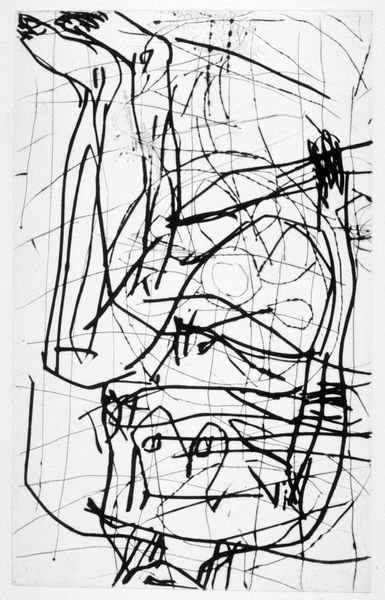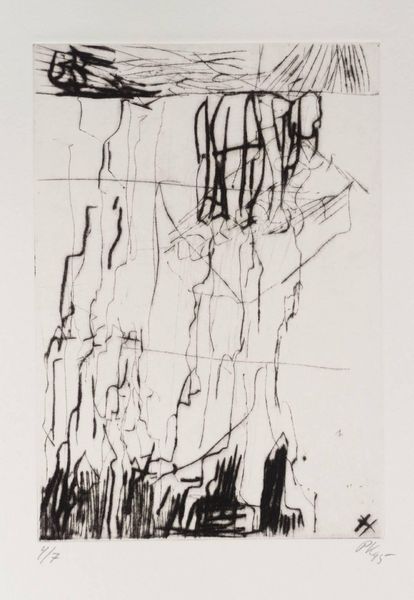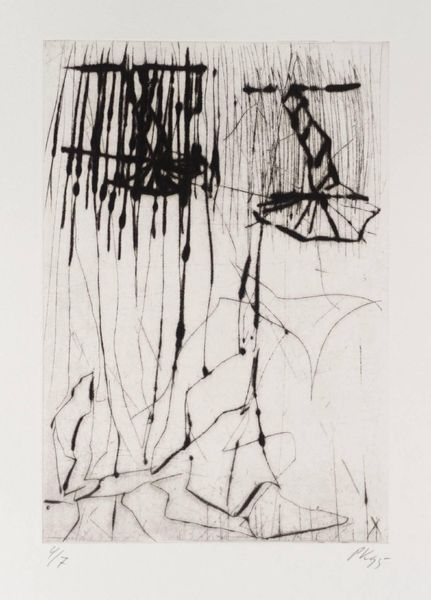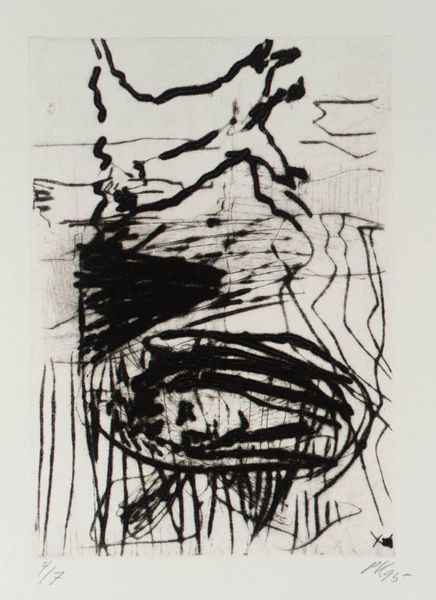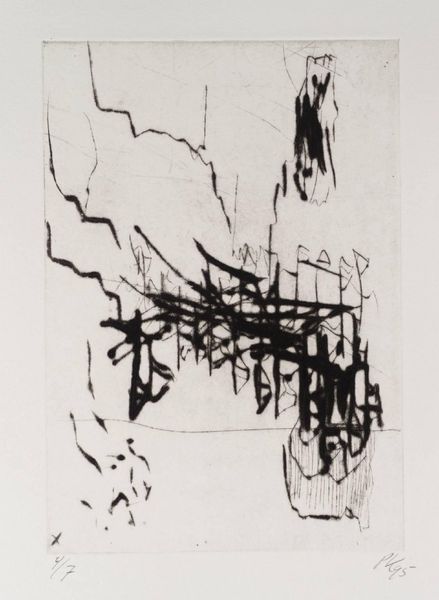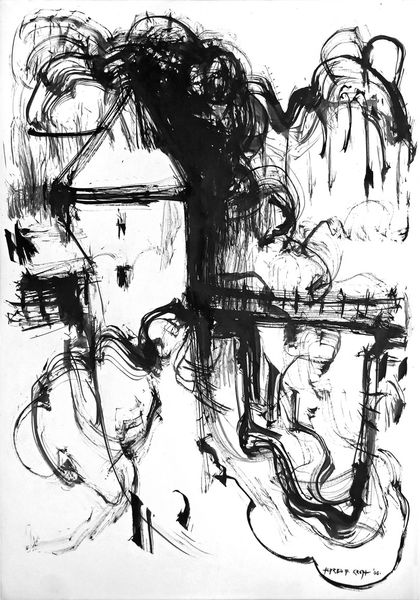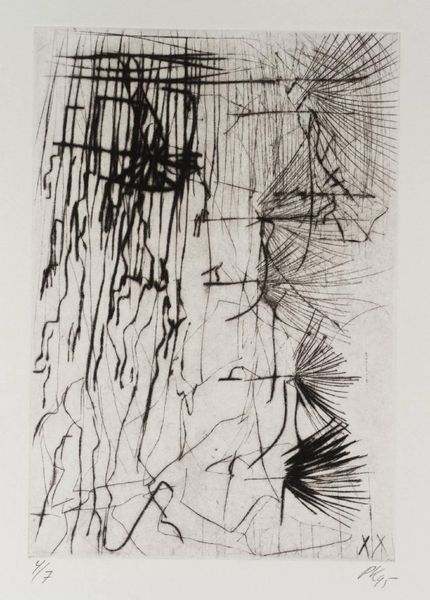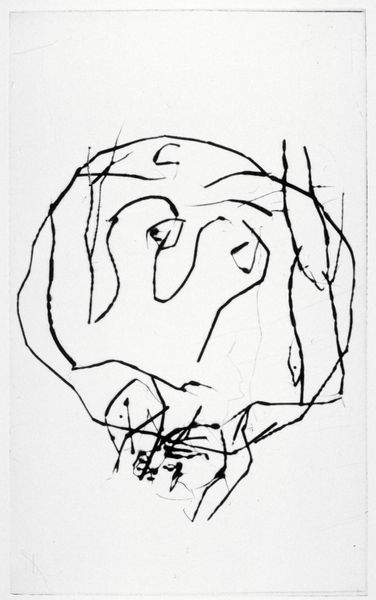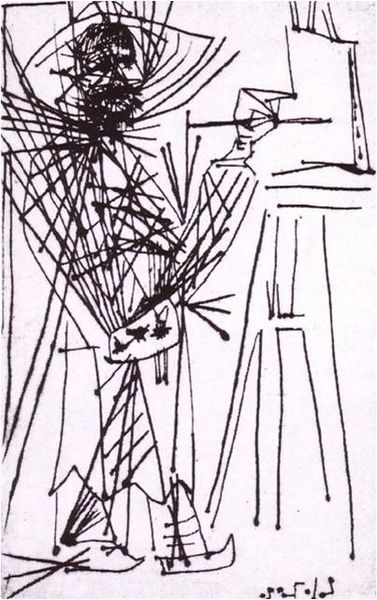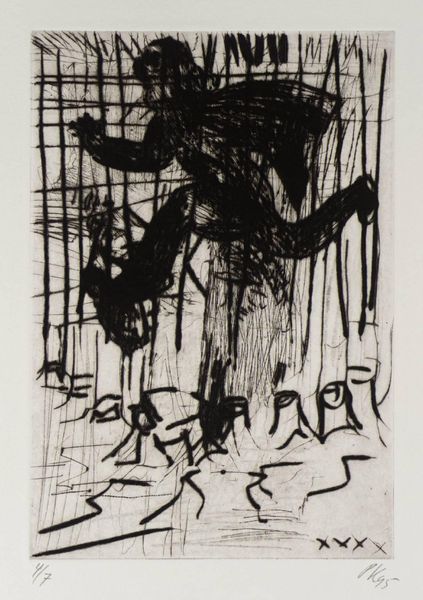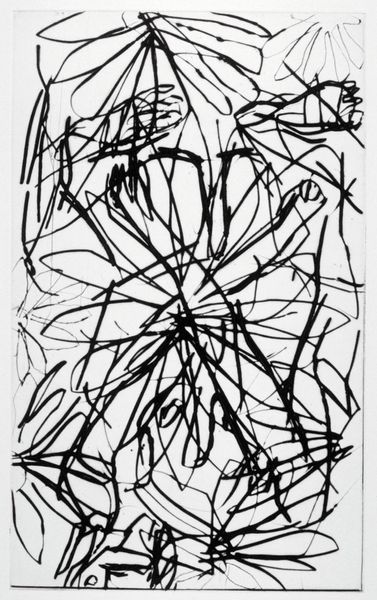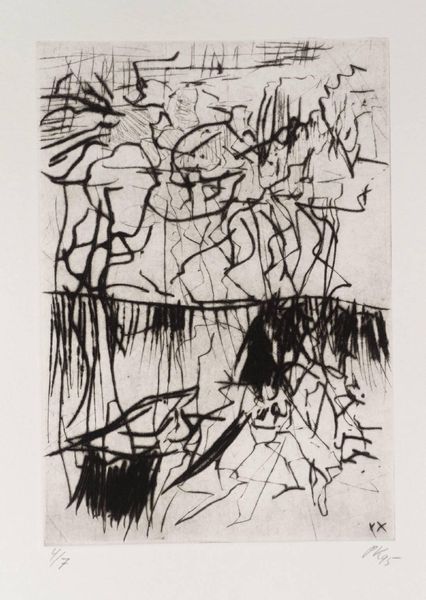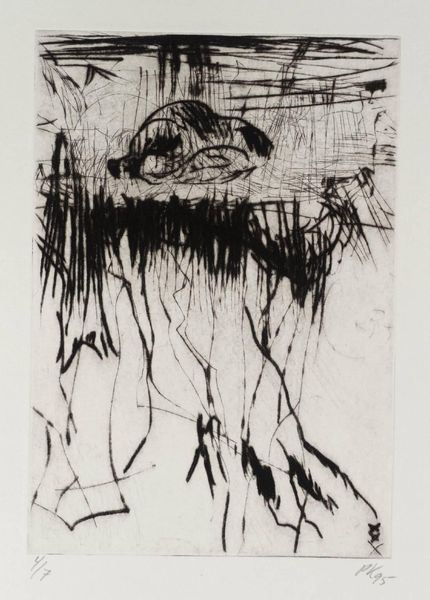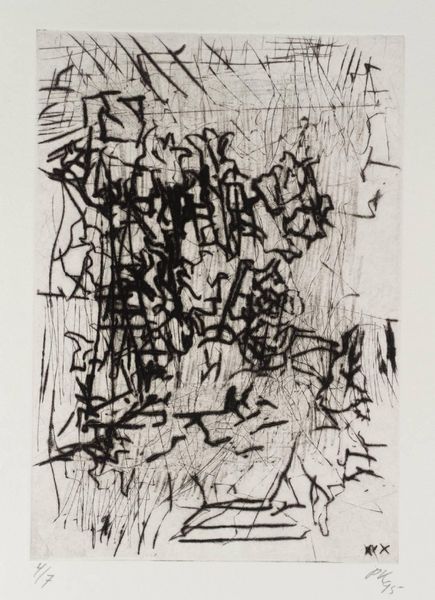![[no title] by Georg Baselitz](/_next/image?url=https%3A%2F%2Fd2w8kbdekdi1gv.cloudfront.net%2FeyJidWNrZXQiOiAiYXJ0ZXJhLWltYWdlcy1idWNrZXQiLCAia2V5IjogImFydHdvcmtzLzVmN2NhMzE1LTE5YzgtNGU4YS1hN2M0LTcxMmQxMzNhMGFjMy81ZjdjYTMxNS0xOWM4LTRlOGEtYTdjNC03MTJkMTMzYTBhYzNfZnVsbC5qcGciLCAiZWRpdHMiOiB7InJlc2l6ZSI6IHsid2lkdGgiOiAxOTIwLCAiaGVpZ2h0IjogMTkyMCwgImZpdCI6ICJpbnNpZGUifX19&w=2048&q=75)
Dimensions: image: 290 x 179 mm mount: 561 x 409 x 4 mm
Copyright: © Georg Baselitz | CC-BY-NC-ND 4.0 DEED, Photo: Tate
Editor: This striking print by Georg Baselitz at the Tate, created with stark black lines, reminds me of looking through a distorted window. What's your interpretation? Curator: Baselitz often challenges traditional representation. Considering his German background, one might see this as a visual representation of fragmentation and the disruption of established norms prevalent after World War II. Does that resonate with you? Editor: Yes, the disruption is clear. The figure seems almost trapped or obscured. I hadn't thought of it in that historical context. Curator: The "heroic" figure, frequently a subject, is inverted and seemingly caged. This raises questions about power, identity, and the artist's role in post-war society. Food for thought, isn’t it? Editor: It certainly is. I'll look at Baselitz's work differently now, considering the socio-political landscape.
Comments
Join the conversation
Join millions of artists and users on Artera today and experience the ultimate creative platform.
tate 8 months ago
⋮
Baselitz’s vigorous and expressive style, influenced by the drawing and paintings of the mentally ill, often represents the body as a site of anxiety. This series of prints show a female figure crouching and twisted. The body is fragmented: in some works, the head is cropped, while others feature only isolated limbs. The hatched and scored quality adds to the sense of raw spontaneity and even violence. Many of the prints include flowers and vegetation which, with the use of greens and browns, suggest wild nature and fertility. Gallery label, July 2015
